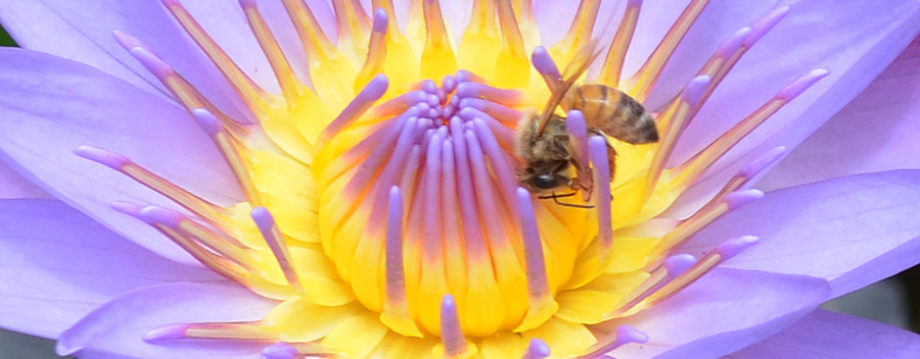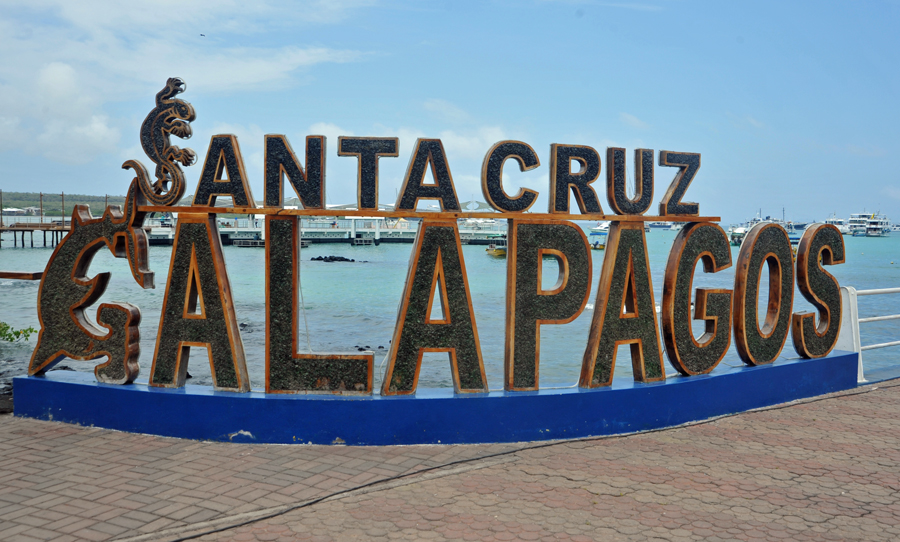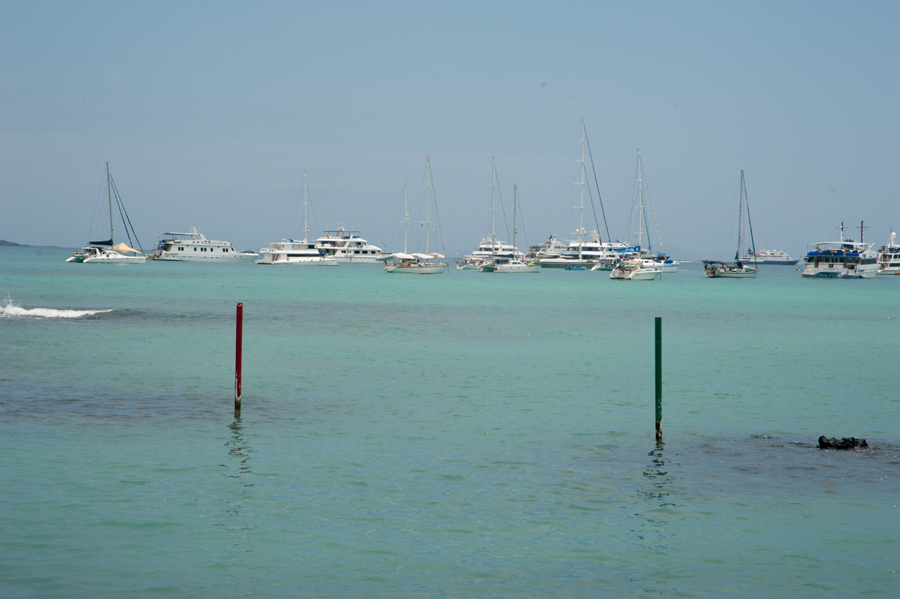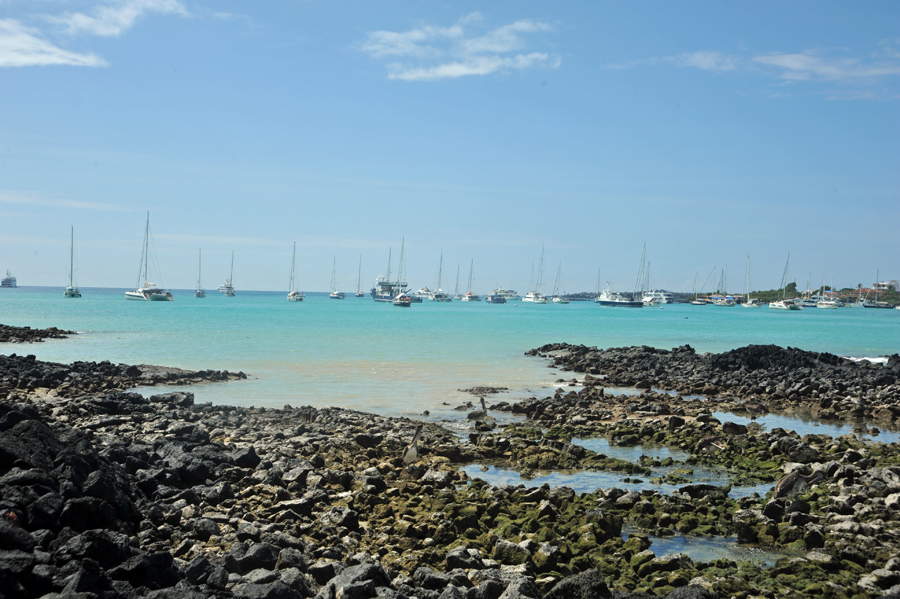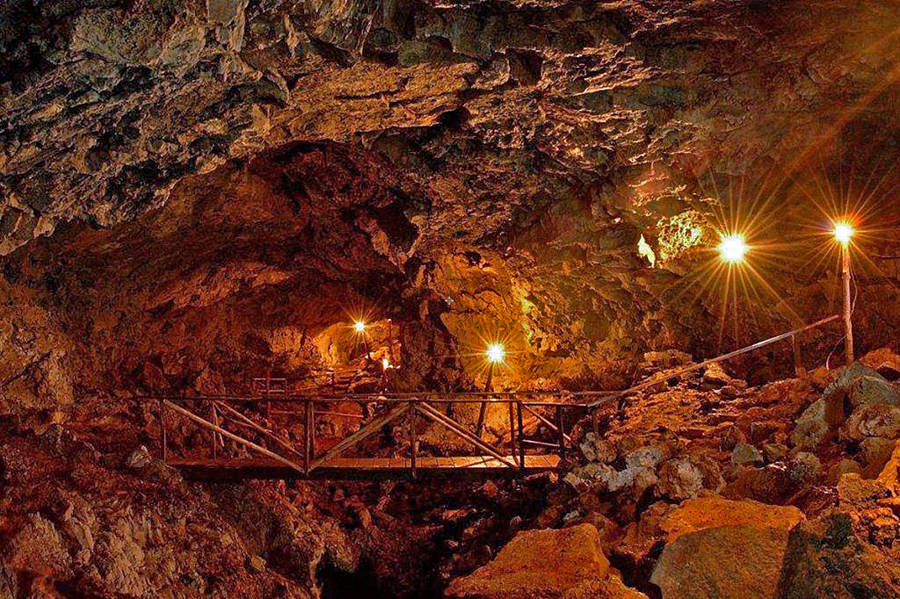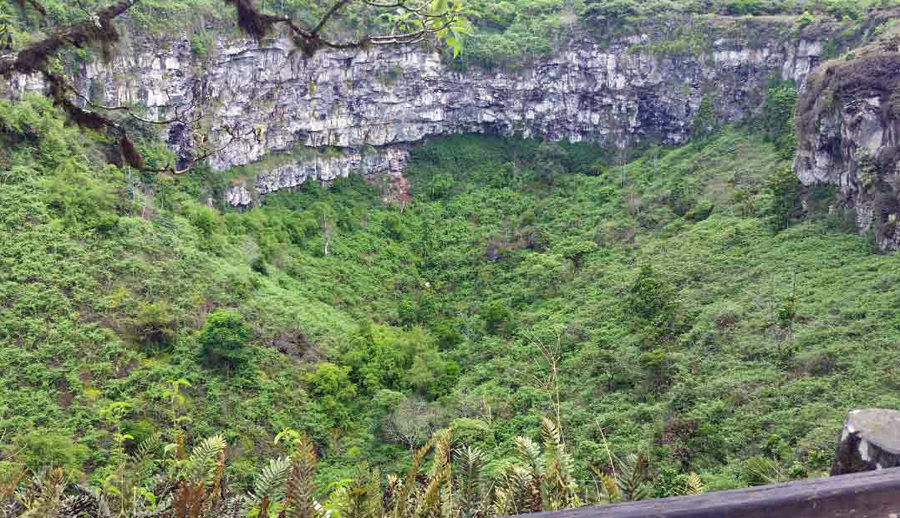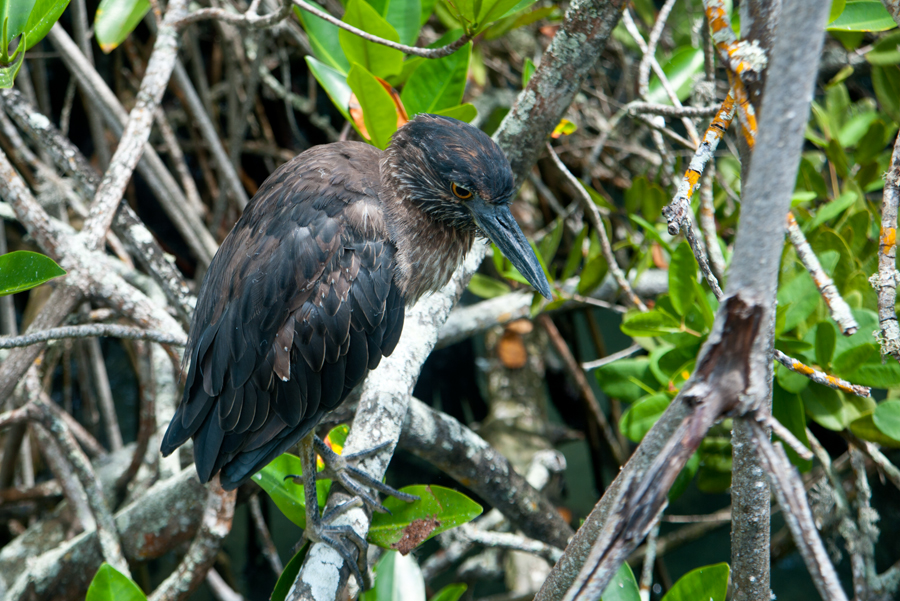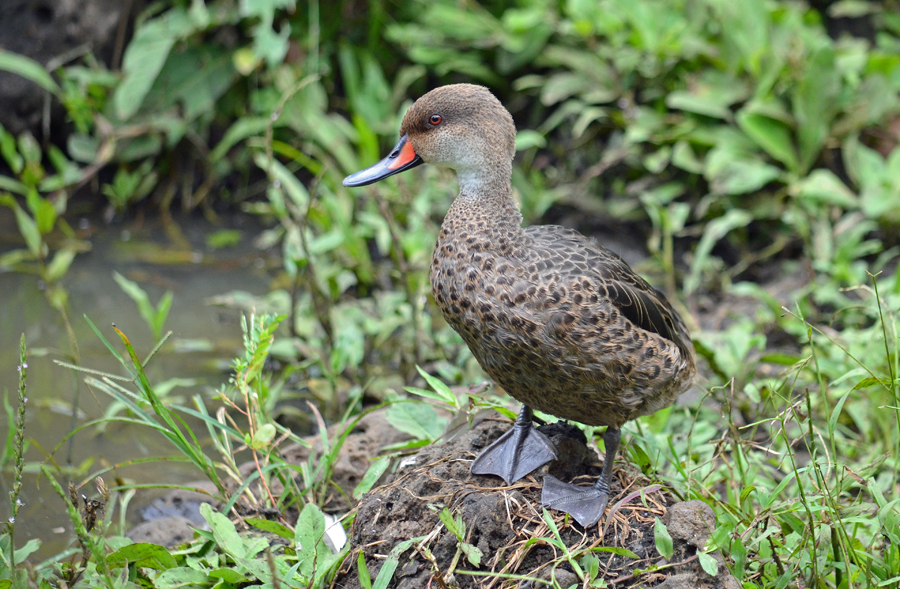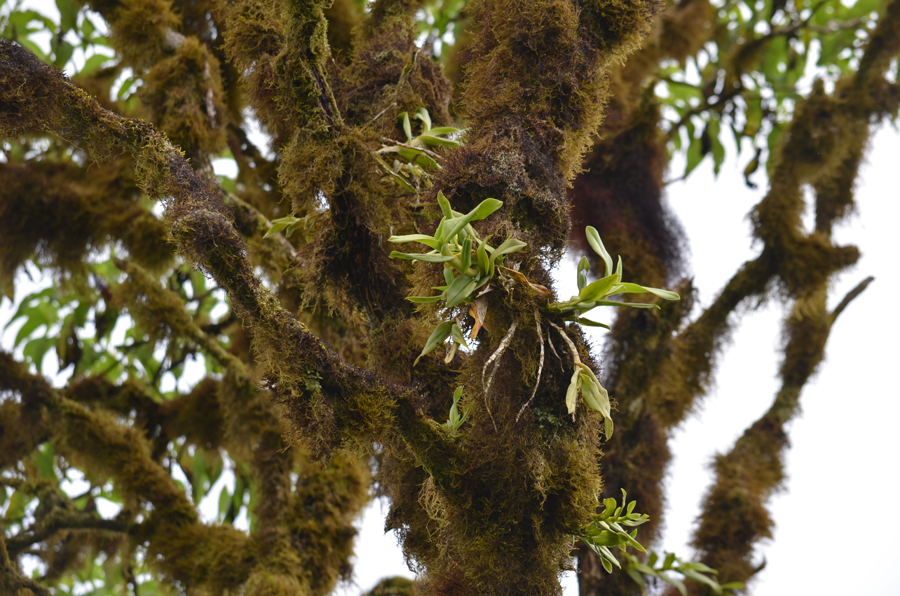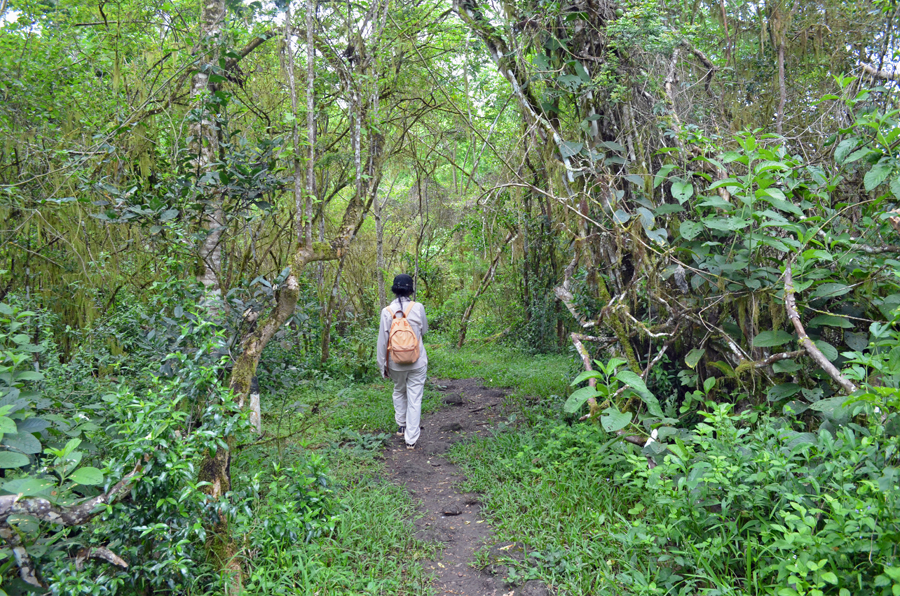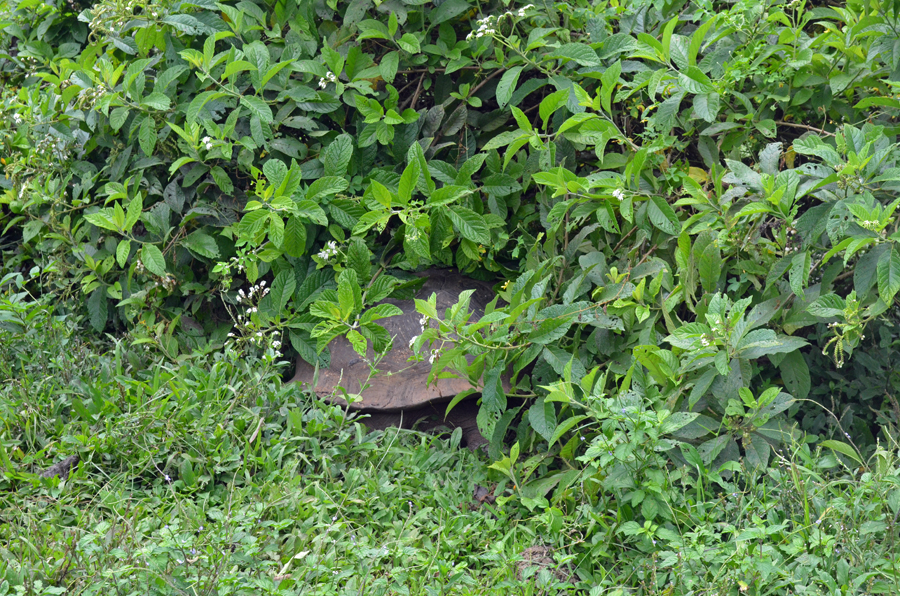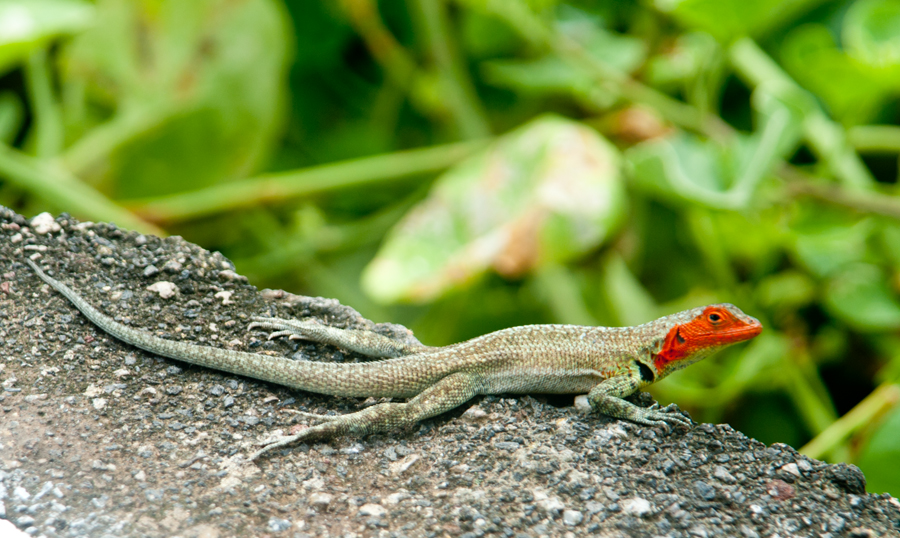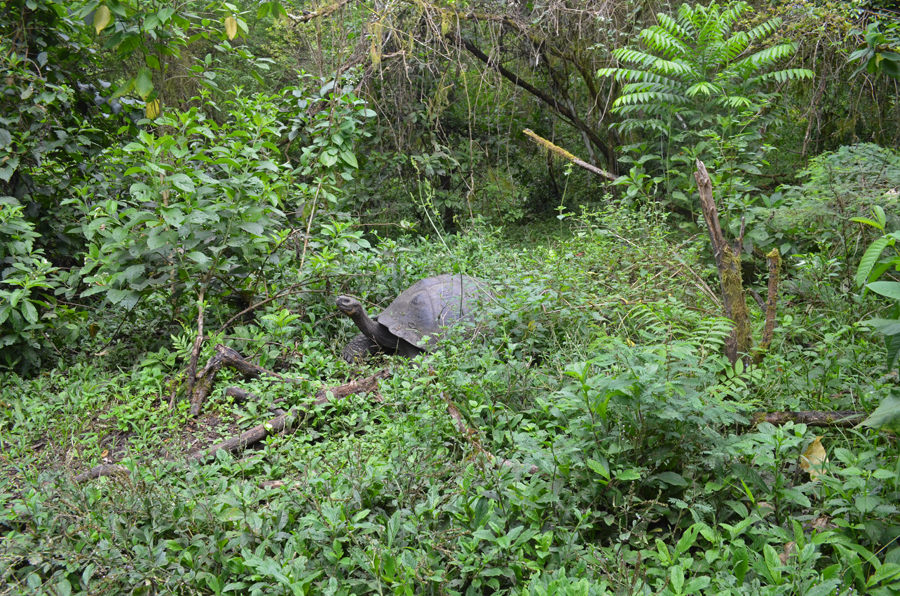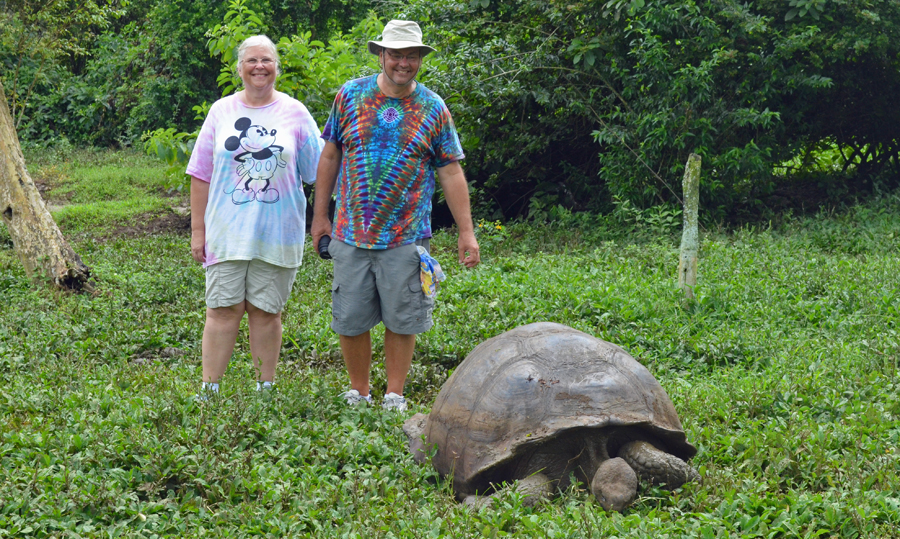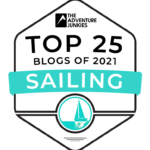Some mornings after I have made my pot of Taylors of Harrogate English Breakfast Tea and climb up into the cockpit to do the morning crossword, I am amazed we are in Galápagos. This place is awesome! Cindy said a couple of days ago, she too looks around and is so glad we are here.
We have located to Santa Cruz Island and anchored in the harbor of Puerto Ayora. The first thing we noticed was the lack of seals and sea lions. We asked our agent when they came to pick up our zarpe and charge the entrance fee about the absence of seals. He laughed and said there are a few but mostly they have their own island. Just outside the port is the island of Bellavista. It is a small uninhabited island with a couple of nice beaches where some people will take a water taxi for the day. This is where the seals hang out. On San Cristóbal Island, our previous stop, the seals didn’t have the luxury of their own island and mingled with the human population.
We had read about this harbor being a little bit rolly. By rolly, I mean the boat rocks about since there is little protection from the ocean surge. If the boat turns sideways to the surge, it’ll rock us to the point where it is difficult to stand up. At night the wind dies down and the boat will turn and drift about on the anchor. This is when it really rolls. We found ourselves sliding about in bed. After the first two nights, we decided the surge isn’t going to change. We opted to put out a stern anchor in addition to our bow anchor since we noticed several other cruising boats also had stern anchors out. Now we know why. This is a method to keep the boat pointed into the surge and will really minimize the roll effect. Our third night was a lot more comfortable.
Then, the World ARC boats started to arrive. The ARC is an organization where people pay to join and sail around the globe in one year. I once looked into joining the ARC but quickly decided against it once I realized they don’t really stop anywhere. For instance, the only two stops they make in the entire Caribbean Sea is the island of St. Lucia (not one of my favorites) and Santa Marta, Colombia. If you recalled we spent about 4 months exploring Colombia from Santa Marta. The ARC was there for about 5 days. In my opinion, if I am to sail the world, I’d like to stop once in a while and take time to enjoy the ports of call and smell the roses. However, I can see that some people are wired differently and circumnavigation is the primary goal.
This year’s group is about 35 boats. During the time we were in Santa Marta with the ARC, they took over the captain’s lounge, the local marina bar, and the laundry. Yep! 35 boats all trying to do all their laundry in 5 days. The marina only had one working machine and they gave it a real workout. The ARC boats arrived shortly after another OCC rally of forty boats, or more. Things in the marina got back to their sleepy normal self in a few days and we emerged unscathed and could make polite chit-chat with the staff once again.
Please don’t misunderstand me. I am not at all against the ARC or people who wish to circumnavigate the globe rather quickly. However, I do like my space in an anchorage and it’s getting a little crowded here. In addition to the tour boats, regular cruisers, and local boats, adding an extra 30 plus boats to the harbor makes it crowded. In addition, the ARC boats have yet to discover how the stern anchor will make their stay here a lot more comfortable. A few have tried to anchor very close to us and when we tell them we have a stern anchor out and we will not swing with them, they seem a little miffed. We even point out how most of the boats around us also have stern anchors out. In practice, a good sailor should evaluate boats in an anchorage before dropping their own anchor and determine how other vessels are secured. Some of the boats here are on a mooring, others like us with two anchors and others with just a bow anchor. We all swing about differently. Oh well. They’ll be gone soon.
(Note to other cruisers heading this way: upon arrival select a spot behind the reef and use a stern anchor to keep your vessel pointing SE. Mark the stern anchor with a float)
We have also found the ARC people not to be very friendly. When riding a water taxi with them, they barely manage a grunt when we say hello. We have found this true with other sailing rallies. I’m not sure why people are this way. Perhaps it is in the bylaws of the rally, don’t talk to strangers. Who knows? Oh well. Everyone else in the anchorage is quite chatty and willing to share information.
We set up a private tour with the help of our agent. He really outdid himself this time. Our guide was a young lady called Marcella and our driver a young man call Israel. Marcella speaks three languages fluently: Spanish, French, and English. She is a walking encyclopedia of Galápagos. As we toured, she answered all of our questions and gave us tidbits of information during our walks. Our first stop involved some lava tunnels.
Marcella explained to us how the islands were formed volcanically. During the formation, lava flowed from the volcano to the ocean. Some of the lava flowed underground and formed tunnels of hot molten rock. Here we are millions of years later and these tunnels can be toured. The tunnels we toured were on private property. A large property owned by the Royal Palms Hotel has some incredible tunnels. What makes them incredible is the fact some of the tunnels are stacked two or three high. It is possible in one part of the tour to see the separate lava channels from a large chamber.
As soon as we left town with Marcella and Israel, it started to rain. Marcella asked if we brought rain jackets. Of course, we didn’t. No problem say said, I’ll borrow umbrellas. I thought something might have been lost in the translation here so I didn’t push the issue. However, Marcella was a woman with a good back-up plan. Before we went to the tunnels, she stopped at the main office of the resort and borrowed umbrellas for us to use the rest of the day. At the end of the day, when we passed the resort on our way back to town, she returned them. Marcella joked with us that one of the umbrellas we were using was used by the movie star Brad Pitt. Apparently, he and Angelina Jolie stayed at this rather posh resort on their visit to Galápagos.
We were also provided with hardhats and flashlight. Thank goodness for the hardhats. More than once we hit our noggins on the roof of the tunnels. Marcella is about a foot shorter than us and had an advantage as we snaked our way through the tunnels. She talked about blind beetles and all sorts of critters living inside permanently in the dark. I was wishing she hadn’t done this as my flashlight battery started to die about two-thirds of the way through. Cindy saved the day by lighting a path for two.
The tunnels on the Royal Palms property were discovered prior to the hotel being there. Previously, it was farmland and the farmer’s pigs were disappearing. The pigs were looking for shade and found the entrance to the tunnel and unfortunately got stuck inside. It addition to the pigs, other farm animals disappeared. Once the tunnels were discovered, the remains of these animals along with giant tortoise carcasses were discovered.
It is darn hot inside the tunnel and a thermos of ice-cold water was waiting for us in the truck thanks to Cindy’s pre-planning. We asked about how this island gets water. It comes from three sources: rain, reverse osmosis and imports. Water is going to be a problem in the islands as the population continues to grow. 60% of Santa Cruz’s population is children. We offered Marcella and Israel Cream Puff water. We told them how we make our own water on the boat and the water we offered them was made between Panama and Galápagos.
Our next stop on the highland tour is a couple of sinkholes. I thought this sounded a little bit hokey. We lived in places in the USA where sink-holes swallowed cars and houses. However, I still had my Brad Pitt used umbrella and the rain was light and intermittent, so I’m game. All the time, Marcella is pointing out plants, birds, and trees. As she did so she talked about species indigenous to the islands and species imported. One of the more interesting factoids: certain trees were imported as they can be used to treat malaria. It turns out Galápagos never had an outbreak. A horrible raspberry plant with bitter berries was imported for its fruit. It is now considered a weed.
One thing I find hysterical during our travels here is the wild giant tortoises. They are everywhere. And, I mean everywhere. Once outside of town it is not uncommon to see them on the roadside or ambling slowly down a bike lane. It is mating season so they are on the move. Well, sort of on the move. Things in their world are pretty slow. We see road signs warning drivers to watch out for tortoises on the roads.
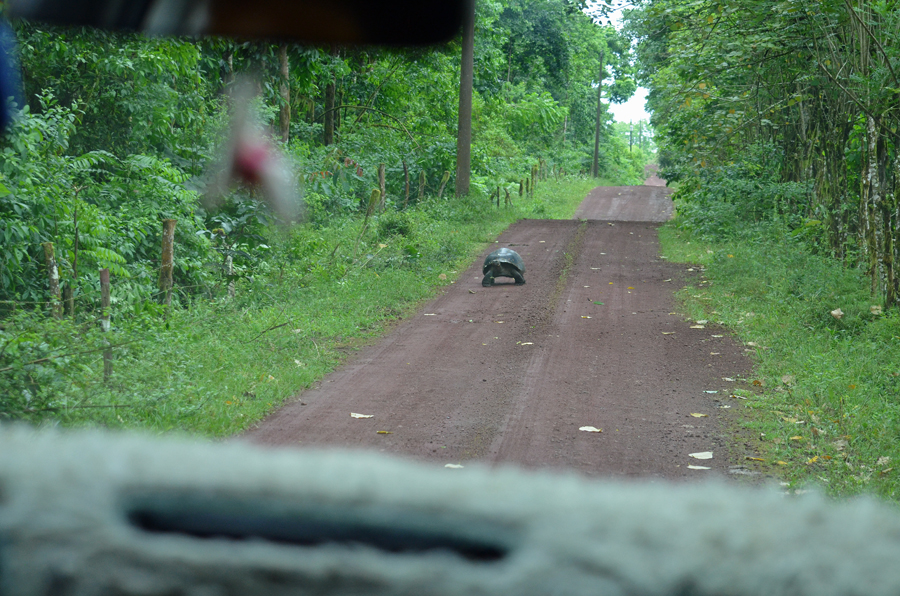
The tortoise knows what side of the road to walk down. They can actually walk about 10 kms in one day (6.2 miles)
Marcella takes us to a private farm. On this farm, the owner has planted vegetation the giant tortoises enjoy. It is a huge property with no fences and tourists are allowed to walk about and seek out other giant tortoises. The vegetation works. The tortoises find it and hang out there. Marcella told us she was going to take us to see real giant tortoises. She said we will notice when we get there how they are active, have shiny shells and almost smile. They are healthy because they are free. She promises we will see big giant tortoises. They will be bigger because they are wild. Because it is not a sanctuary, we can walk anywhere and are not restricted to the trails. Once we arrive, the hunt begins. It doesn’t take long before we spot a massive giant tortoise.
Marcella is right. The tortoises in the wild are surprisingly active (when they are awake). They sleep about sixteen hours a day. When they sleep, they disappear under a big bush or dig a sort of nesting hole in the ground and settle into it to keep cool. The day of a tortoise is spent doing one of four things. They eat, sleep, poop or copulate. They rarely ever pee. Water is stored around their heart and in a giant bladder. The water stored is pure and is in reserve so the tortoise can endure long periods of drought.
Because the tortoises have shells, they can walk about in the dense shrubbery on the island. As they walk, they form tunnels. The tunnels become a highway system for other animals. We watch one particular tortoise move into the shrubbery. It wasn’t long before we heard the snapping of branches and twigs. I had no idea they were that powerful.
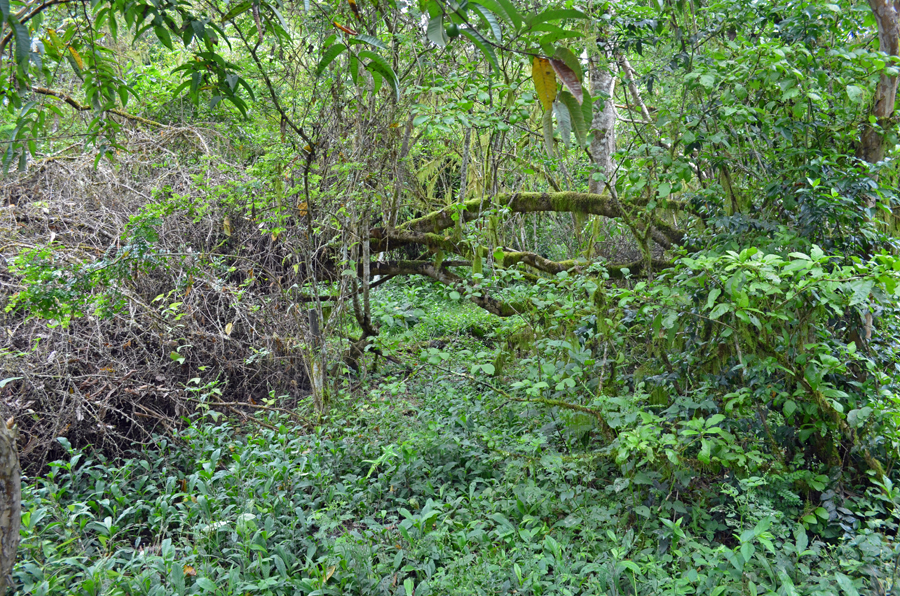
We hear a tortoise moving about in the dense ground cover. This is what Galápagos looked like before humans
It is so quiet at the farm we can hear the tortoises breathe. Like humans, they do not breathe when they eat and they eat most of the time when they are awake. It is a raspy sort of sound. Marcella talks about all the tortoises’ anatomy and their slow heart rates of about 6 beats per minute. She tells us about a vet who was doing surgery on a giant tortoise in the Darwin Center and thought the tortoise had died during the operation. He thought this because the tortoise’s heart did not beat for three minutes. He was at the end of the surgery and left the room. When he returned a couple of hours later, he found the tortoise had come out of the anesthesia and was roaming about the floor.
We also learn to tell how old a tortoise is by the pattern and rings on the shell. It is not really possible to pinpoint the age but there are clues on the shell that give a good estimate. Here we are with a rather muddy 125 year old female. How cool is that?
